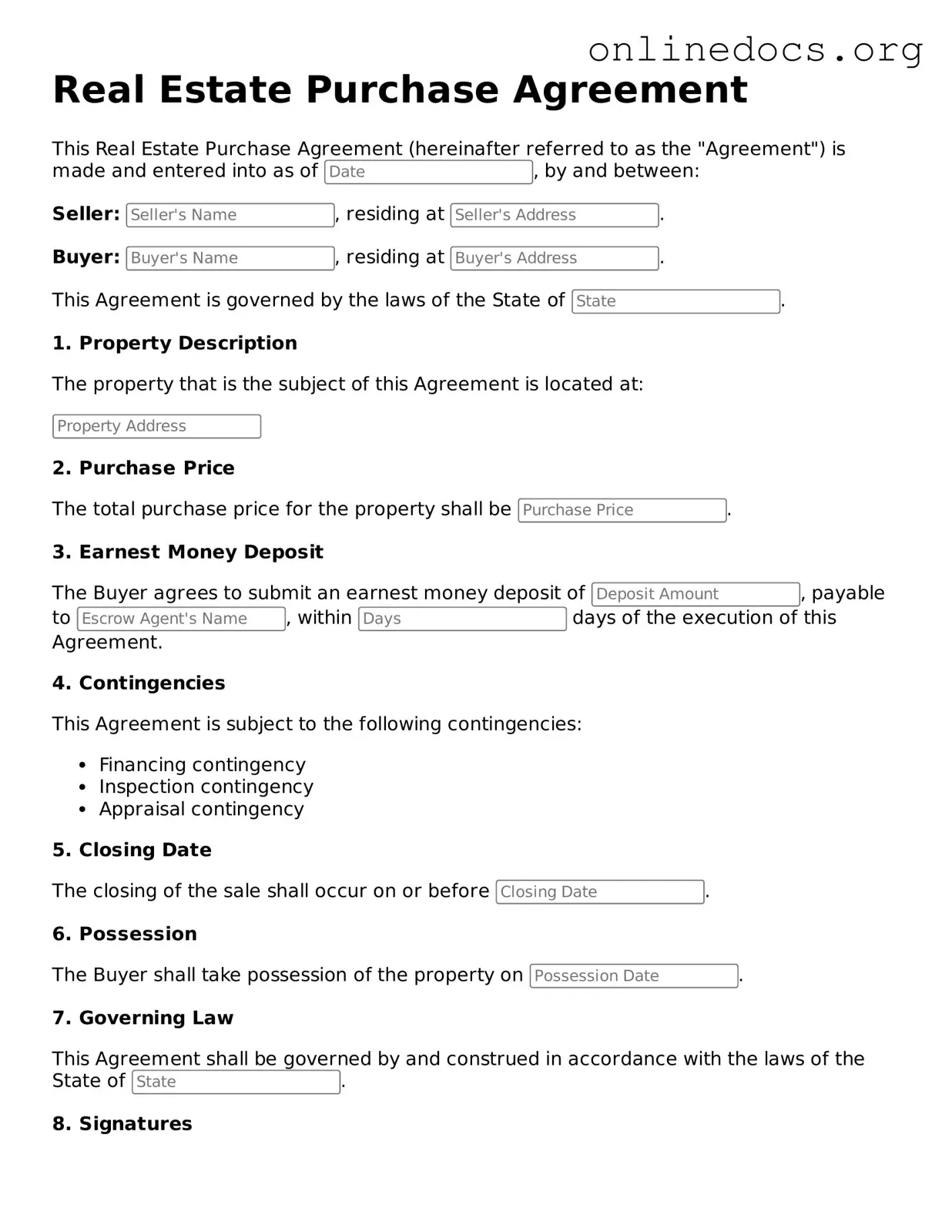The Real Estate Purchase Agreement (REPA) is similar to a Lease Agreement in that both documents outline the terms under which a property is occupied. While a REPA facilitates the sale of property, a Lease Agreement governs the rental of property. Both documents detail essential elements such as duration, payment terms, and responsibilities of the parties involved, ensuring clarity and mutual understanding.
Another document akin to the REPA is the Option to Purchase Agreement. This agreement grants a buyer the right, but not the obligation, to purchase a property within a specified timeframe. Like the REPA, it establishes the purchase price and conditions, but it differs in that it allows for flexibility in decision-making, giving the buyer time to assess their options before committing to the purchase.
The Rental Agreement serves a vital role in the leasing process, as it delineates the relationship between landlords and tenants. Similar to a Lease Agreement, it encompasses critical details like payment terms, rental duration, and property upkeep responsibilities. By utilizing a comprehensive template from legalformspdf.com, both parties can ensure clarity and protect their interests throughout the duration of the lease.
A Purchase and Sale Agreement (PSA) closely resembles the REPA as it also outlines the terms for buying and selling real estate. Both documents specify the property details, purchase price, and closing date. However, a PSA may be more comprehensive, often including contingencies and additional clauses that address specific buyer and seller concerns, making it a more detailed counterpart to the REPA.
The Joint Venture Agreement can be compared to the REPA in that it involves multiple parties collaborating on a real estate project. This document defines the roles, responsibilities, and profit-sharing arrangements of each party. While the REPA focuses on the transaction of property, the Joint Venture Agreement emphasizes the partnership aspect, detailing how parties will work together to achieve a common goal.
A Real Estate Listing Agreement is similar to the REPA as it establishes the relationship between a property owner and a real estate agent. This document outlines the terms under which the agent will market the property for sale. Both agreements address the sale of real estate, but the Listing Agreement focuses on representation and marketing efforts, while the REPA centers on the actual sale transaction.
The Seller Financing Agreement also shares similarities with the REPA, particularly in how it outlines the terms of a property sale. In this case, the seller agrees to finance the buyer's purchase directly, rather than through a traditional lender. Both documents specify payment terms, interest rates, and consequences of default, ensuring both parties understand their financial obligations.
A Real Estate Option Agreement is another document that parallels the REPA. This agreement allows a buyer to secure the right to purchase a property at a later date. It includes terms such as the purchase price and duration of the option. While the REPA finalizes the sale, the Option Agreement provides a pathway for potential buyers to secure property without immediate commitment.
Lastly, the Closing Disclosure is similar to the REPA in that it provides a detailed breakdown of the final terms of a real estate transaction. This document outlines costs associated with the sale, including closing costs and fees. While the REPA serves as the foundational agreement for the sale, the Closing Disclosure ensures transparency and understanding of the financial aspects before finalizing the transaction.
